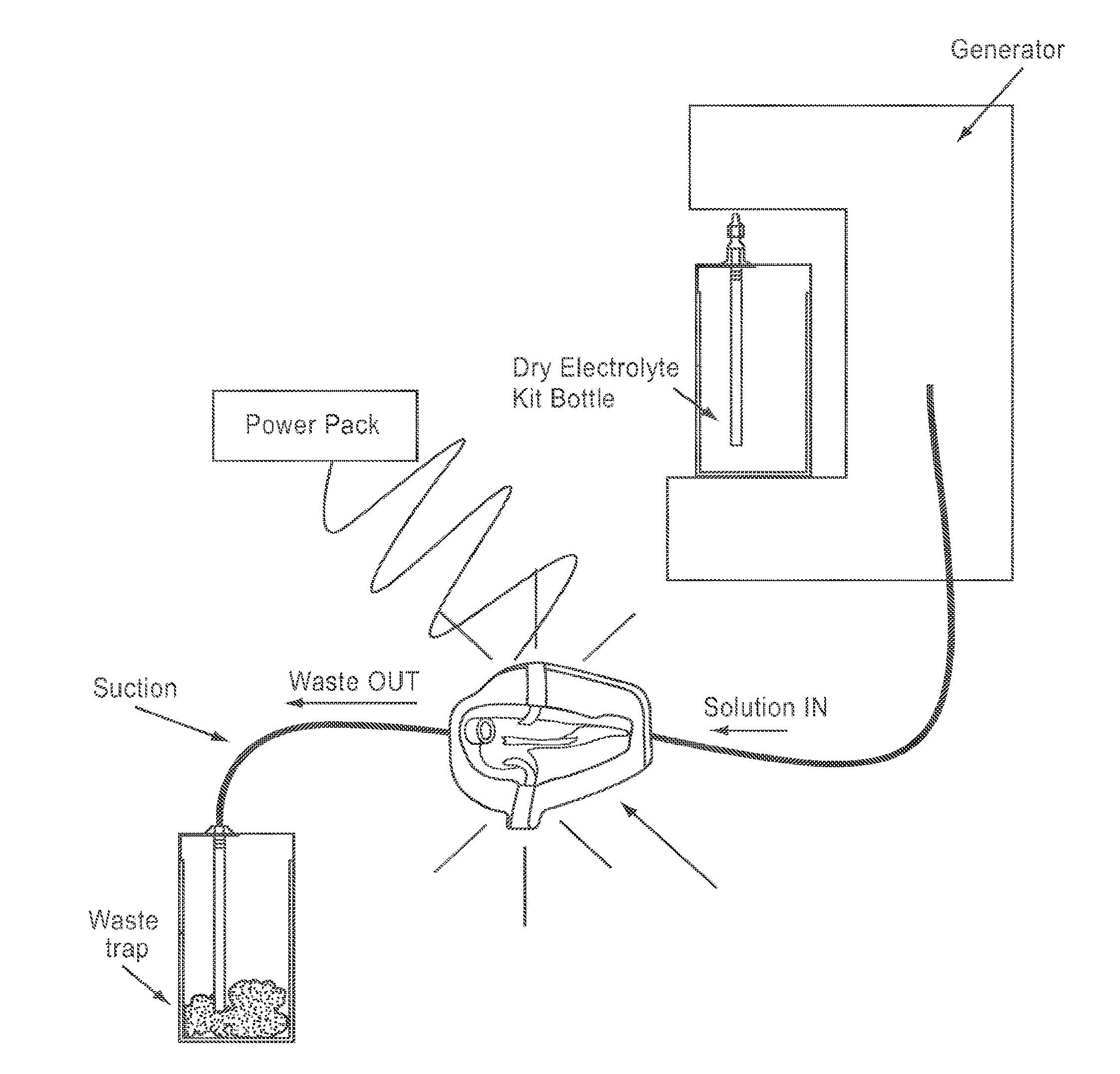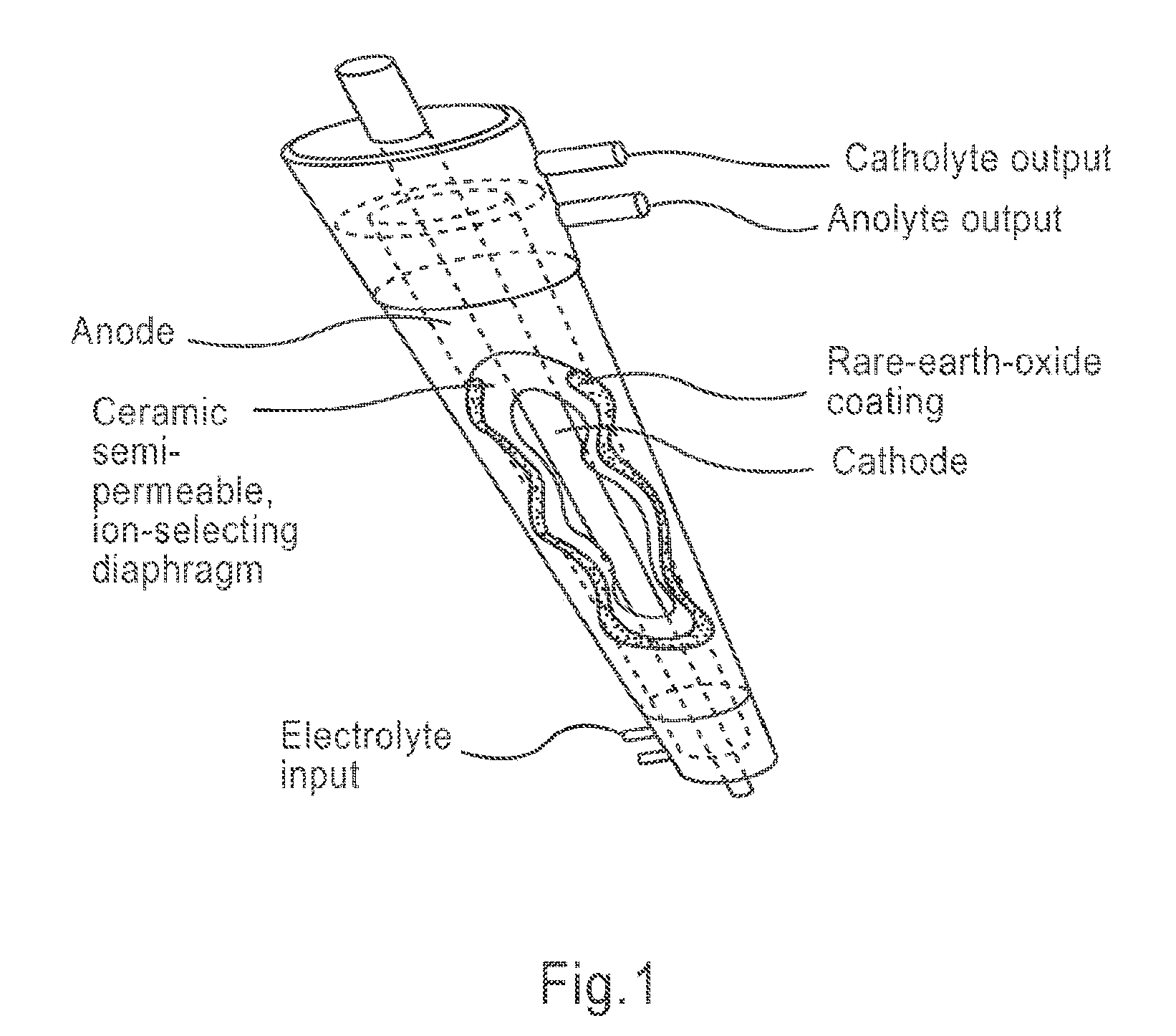Apparatus and method for wound, cavity, and bone treatment
a technology for wounds and bone, applied in dermatological disorders, chlorine active ingredients, drug compositions, etc., can solve the problems of increased cost of $2 billion, interruption of normal wound healing process, and disruption of sequential process of wound healing, so as to achieve safer wound care environment and quick wound closure
- Summary
- Abstract
- Description
- Claims
- Application Information
AI Technical Summary
Benefits of technology
Problems solved by technology
Method used
Image
Examples
example 1
Treatment of Chronic Venous Ulcers
[0166]Patients who failed to heal with prior conventional therapy including topical anti-microbial agents and compression therapy were treated with HOCl solution. The treatment regimen involved an HOCl solution soak followed by a vigorous scrub with the solution. All patients healed or showed significant improvement after treatment using the above regimen. No adverse effects were seen.
[0167]One case involved a 44 year old male with a history of venous insufficiency wounds to bilateral medial ankles, which was re-occurring despite aggressive compression, topical antibiotics and local wound care. Wounds had been present for 7-8 months prior to treatment with the HOCl solution.
[0168]A marked increase in the slope of the curve (decreased wound volume) was found with the use of HOCl wound cleanser.
example 2
Treatment of Necrotizing Fasciitis
[0169]Necrotizing Fasciitis (NF) is a rare, life-threatening bacterial infection of the skin, subcutaneous tissue, and superficial fascia, associated with a mortality rate of 20-60%. During the past three decades, the incidence of NF has increased and now is estimated at 0.4 cases per 100,000. Pathergy can be due to a single species of bacteria or a polymicrobial process. Historically the treatment of NF included aggressive surgical debridement, systemic antibiotics and adjunctive care including hyperbaric oxygen therapy (HBOT) and local wound care.
[0170]A series of patients with significant wounds following surgical debridement of necrotizing soft tissue infections were managed with HOCL infusion and NPWT. All wounds showed clearance of infective organisms as evidenced by no further progression of tissue ischemia and necrosis, reversal of tissue cellulitis, and rapid formation of granulation tissue. Patients were surgically closed sooner after init...
example 3
Treatment of Surgical Wounds
[0174]Wound closure is optimally achieved when an orderly transition from inflammation through proliferation and remodeling is realized. Negative Pressure Wound Therapy (NPWT) is effective in maximizing the formation of granulation tissue. The wound specialist is then challenged with the decision of what product to transition to once the end points of NPWT have been attained, complete wound base granulation with minimal depth and undermining. The ideal therapy after NPWT would maintain the presence of the fibroblast, limit bioburden and provide proper wound moisture to promote neoepithelialization.
[0175]A series of patients with non-healing surgical wounds were treated with NPWT until the wound bases were well granulated with superficial depth, without undermining or tunneling. These patients were then transitioned to topical therapy with hypochlorous acid. Healing rates were compared to standard moist wound healing regimens. The following cases are prese...
PUM
 Login to View More
Login to View More Abstract
Description
Claims
Application Information
 Login to View More
Login to View More - R&D
- Intellectual Property
- Life Sciences
- Materials
- Tech Scout
- Unparalleled Data Quality
- Higher Quality Content
- 60% Fewer Hallucinations
Browse by: Latest US Patents, China's latest patents, Technical Efficacy Thesaurus, Application Domain, Technology Topic, Popular Technical Reports.
© 2025 PatSnap. All rights reserved.Legal|Privacy policy|Modern Slavery Act Transparency Statement|Sitemap|About US| Contact US: help@patsnap.com



